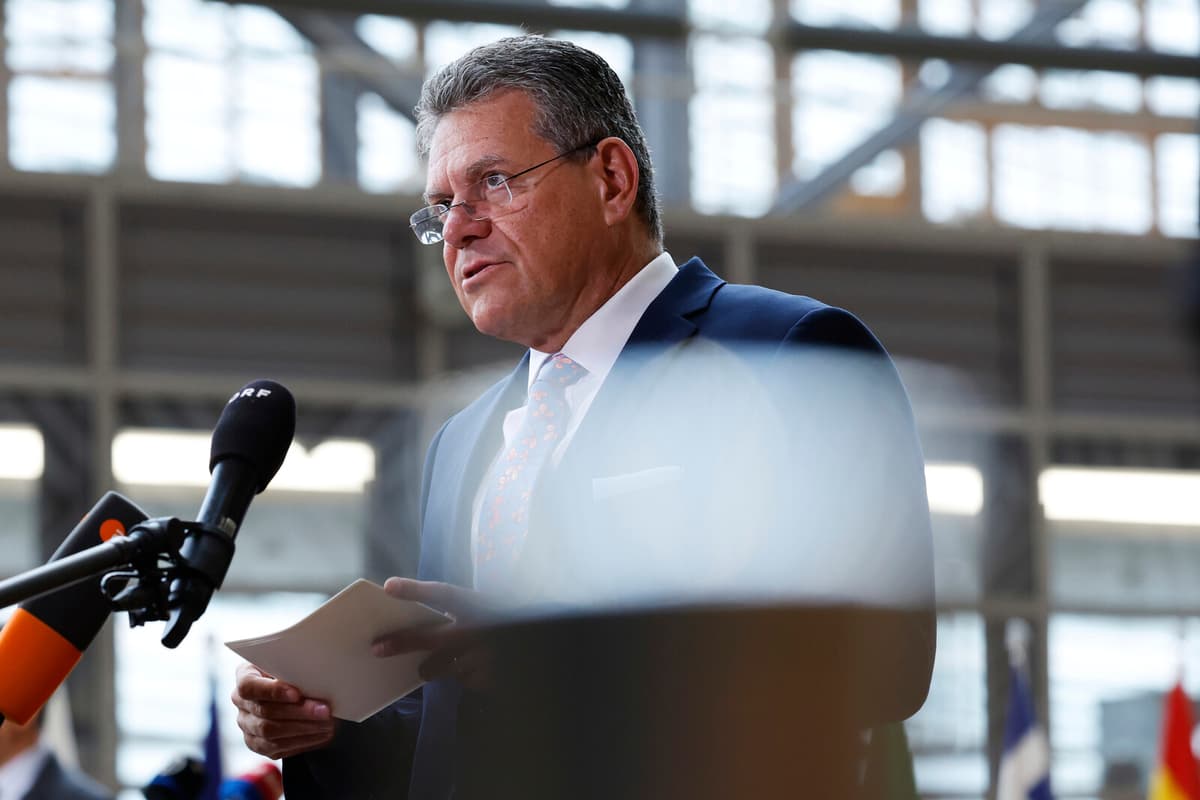Irritation is clear among EU countries' trade ministers over President Trump's threat of tariffs of up to 30 percent – if no solution is reached before August 1.
–Unacceptable and unjustified, says the presidency country Denmark's Foreign Minister Lars Løkke Rasmussen at the press conference after Monday's trade minister meeting in Brussels.
The consensus is large on not backing down.
–There is a broad consensus in the EU right now to enter into this with greater confidence and be able to stand firm if necessary, says Benjamin Dousa to the Swedish journalists on site.
"Everyone wants to see a solution"
Dousa has put forward a Swedish proposal to counterattack the US with the help of reduced tariffs for imports to the EU from other countries.
Step one is still continued negotiations with the US.
–The EU never leaves without having made genuine efforts, promises Trade Commissioner Maros Sefcovic.
At the same time, the EU countries are ready to increase measures against more US products and also take to the so-called "bazooka" where services can also be drawn into the trade conflict.
The next package of measures that the Commission is now letting countries look at consists of retaliatory tariffs worth 72 billion euros.
–Everyone wants to see a solution already before the beginning of August, but if we do not reach that, if the US does not sit down and have serious negotiations with us, then Europe is ready to respond in a tough and clear way, says Dousa.
Not critical of the EU
He is not critical of how the EU Commission has handled the negotiations with the US.
–We have handled this according to all the rules of the art. It is the US that has escalated in several steps now, says the Trade Minister.
Maros Sefcovic will hold new talks with his counterparts in the US as early as Monday evening.
–We must be prepared for everything, says the Trade Commissioner in Brussels.
Wiktor Nummelin/TT
Facts: Four steps forward
TT
The EU member states want to see a continuation in four steps for the trade conflict with the US:
1. Continued negotiations with the US, "the door should be open".
2. Prepare countermeasures in the form of EU tariffs on US products.
3. Coordinate with other countries that are also threatened by US tariffs, such as Canada, Japan, and South Korea.
4. Open new markets for European companies, for example through free trade agreements with India and the Mercosur countries in South America.






